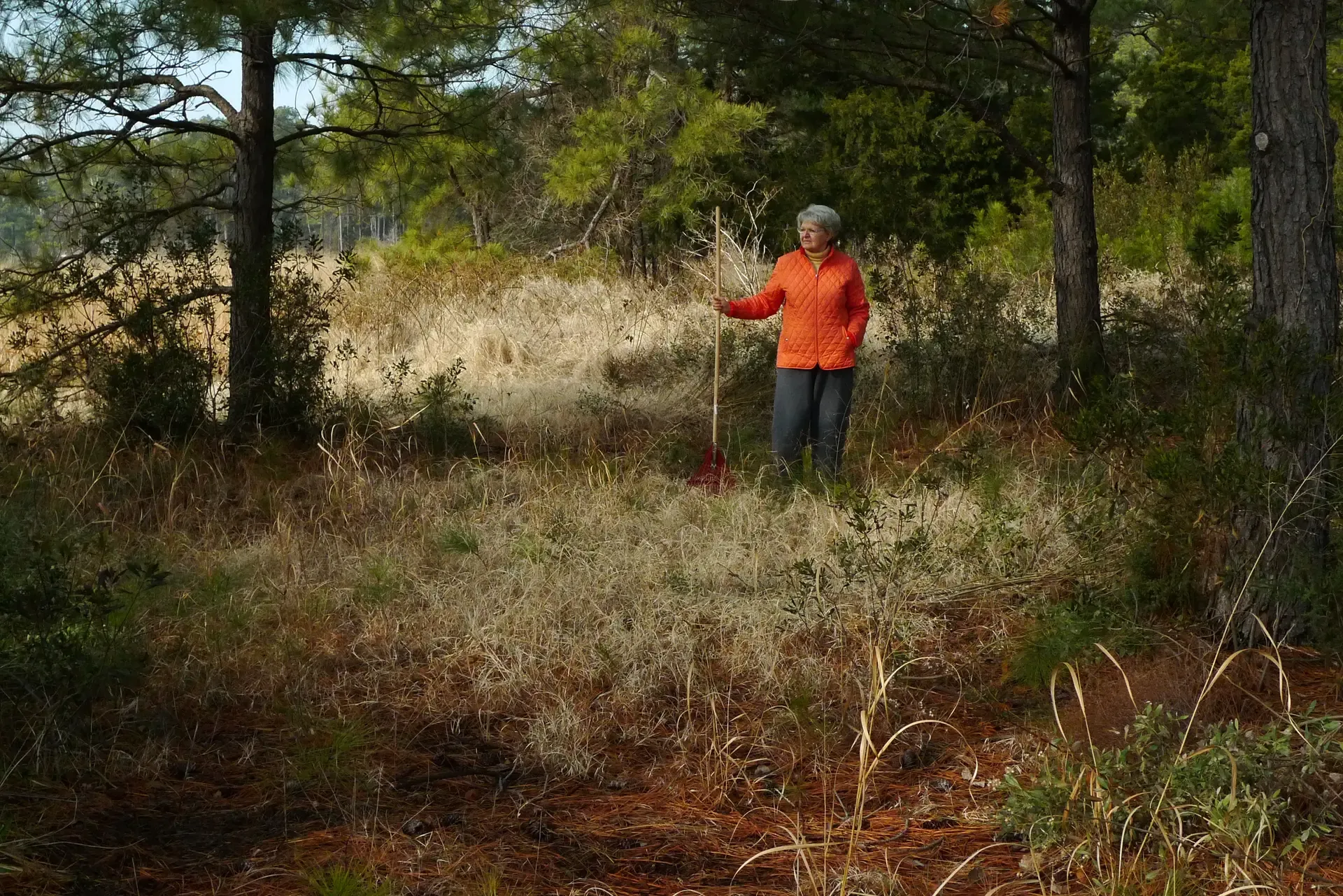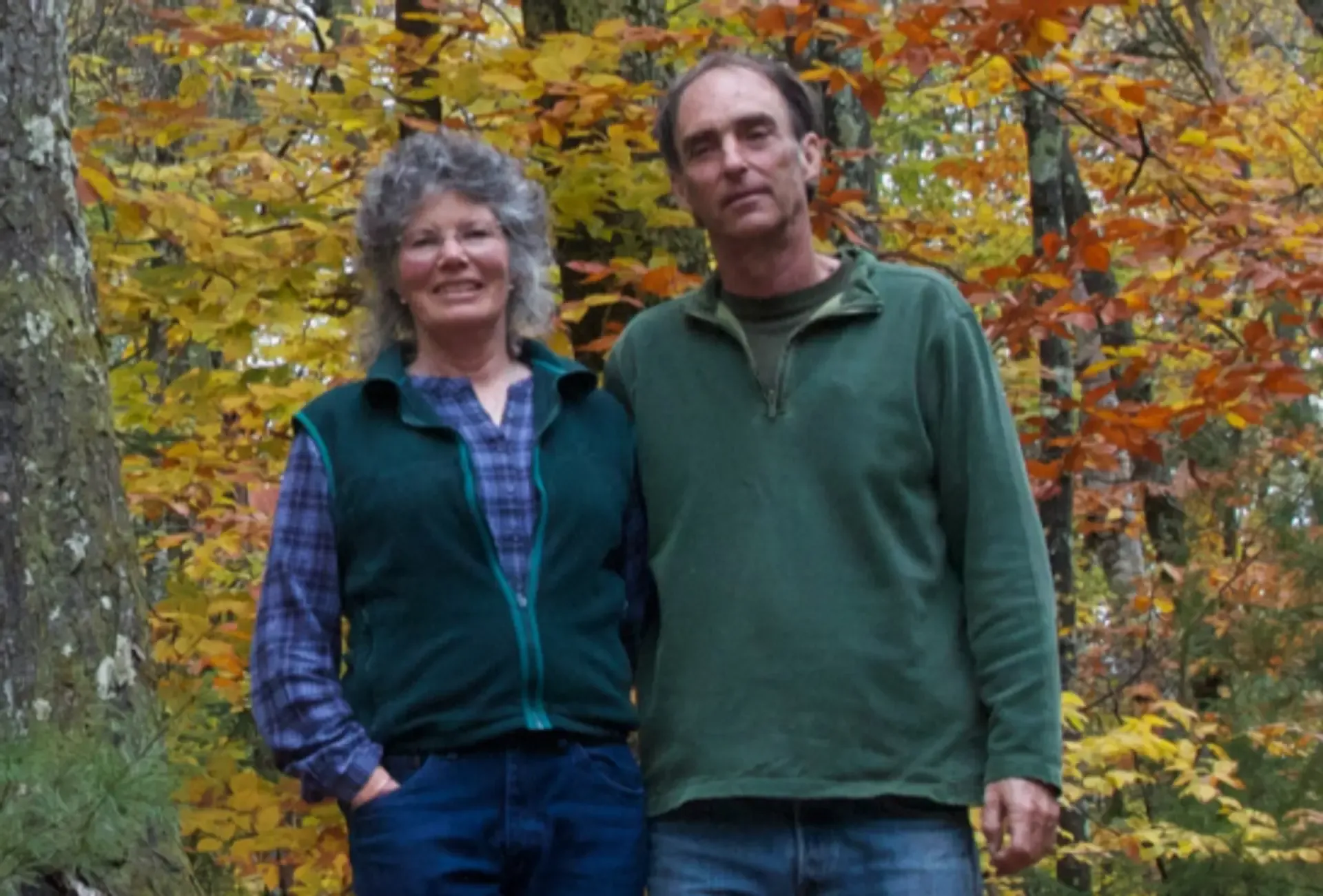Advocacy
Strong federal and state policies have the power to support family forest owners in caring for the health and productivity of America's woodlands.
America needs thriving family forests.
Family forests are critical to thriving rural economies, U.S. forest products manufacturing, communities, and landscapes. Family forest owners are 21 million strong and steward the largest portion of America’s woodlands, more than the government or corporations. One in four rural Americans own forests, with an average forest of 80 acres. These small-acreage assets supply more than 50 percent of the wood processed in U.S. mills, supporting the forest products sector that generates $300 billion annually for the U.S. economy and hosts 2.5 million rural jobs. These lands fuel recreation industries like hunting, fishing, and wildlife, industries that generate another $1 trillion for the U.S economy. They also clean our air and water and store carbon in their trees and soil.
Family landowners can’t sustain this critical American resource alone.
Family forest owners are facing unprecedented challenges that threaten the health and future of our nation’s lands, economies, and communities. From rising management costs and volatile forest product markets to intensifying wildfires, natural disasters and accelerating land conversion, family forest owners, just like farmers, need tools to manage these risks and access to diverse markets to sustain these vital landscapes and rural way of life.
For more than 80 years, AFF has worked in close partnership with family forest owners, policymakers and partners to scale the tools landowners need to improve their forests and create meaningful conservation impact that benefits all Americans. And today, the need for new tools and innovation is only growing. Family forest owners need:
- Growing markets and market access to diversify revenue streams for family forest owners to care for their woodlands, deliver critical goods and services, and participate in American economies
- Programs and policy to reduce risks to the resource, such as wildfire risk and recovery from natural disasters
- Conservation tools and tax policy to keep their forests as forests and improve their land and its benefits
AFF Policy Priorities
Family forests produce critical goods and services to meet the needs of all Americans—from wood for forest products, to clean drinking water, to carbon capture and storage that reduces risks posed by a changing climate. These are just some of the tangible benefits that can be sold in a marketplace, generating diverse income streams for forest owners. Growing and diversifying markets for these products, especially as the traditional timber market is changing and in many places shrinking, will drive private sector investment into these lands and strengthen landowners’ ability to keep their forests healthy and productive.
Far too often, family forest owners are locked out of participating in markets and accessing private investment that can support the health and productivity of their woods. Unlocking access to traditional and emerging markets and growing these markets and related financing – like forest products and the voluntary carbon market – help equip landowners to diversify their income, access expert forestry support to ensure sustainable management, and increase the value of their woodlands. Landowner access and market growth requires public-private partnerships and a supportive policy environment to incentivize private investment into rural economies.
Priority tracks:
- Financing tools: Credit enhancement mechanisms—such as loan or bond guarantees—help reduce perceived risks for investors and buyers by improving the creditworthiness of investments. These tools, like the Rural Forest Markets Act, can build investor confidence in the market.
- Market certainty and transparency: New markets like the voluntary carbon market or new forest products markets are inherently risky, due to their early-stage nature. Producers, buyers, and all market stakeholders need certainty and transparency to confidently participate in new and emerging markets. To unlock the full potential of private forests, we need clear market standards, transparency around price and products, and strategies to reduce barriers so that landowners can participate with confidence and be compensated for the benefits their forests provide.
- Ensuring new tariff policies are compatible with working family forests: Tariffs and expanding timber harvesting on federal lands, while aimed at boosting domestic production, can draw markets away from private forests to focus on harvesting public lands, thus creating more competition for smaller private lands. To support rural families and strengthen America’s timber supply, we must invest in diverse markets and programs and minimize tariff impacts on small forest owners, like through the Advancing Markets for Producers initiative and the ongoing Forest Landowner Support program, that help family forest owners stay competitive and keep forests as forests while sustaining an increased timber supply for an expanded U.S. industry.
Family forest owners are often hit first and worst by extreme weather events. Wildfires, hurricanes, floods, droughts, invasive species, and disease are increasingly affecting the health and value of these small woodlands. In the face of extreme weather and a changing climate, landowners need tools to help prepare for and recover from disasters now more than ever.
Priority Tracks:
- Disaster relief implementation: Disaster relief programs should be designed and implemented to meet the unique needs of forest landowners recovering from natural disasters. Timely financial assistance, technical support, and streamlined access to resources are essential to help landowners restore their forests and reduce future risk. Ensuring forest landowners are included in federal and state disaster response frameworks strengthens both community resilience and the long-term health of our nation’s forests.
- Tax certainty for landowners post-disaster: Current tax policy does not provide adequate support for forest landowners who lose their timber to natural disasters, often limiting deductions to little or no value. This creates long-term financial hardship, as landowners must wait decades for new timber to mature while continuing to pay annual expenses. Legislation like the Disaster Reforestation Act would amend the tax code to allow landowners to deduct the full market value of lost timber, offering critical financial support and tax certainty in the wake of disaster.
- Public investment in private lands wildfire and other threat mitigation: Federal and state investment in wildfire mitigation on private land that catalyze private sector investment is critical to reducing the risk of catastrophic fires and other threats that threaten communities and public health. Since family forest owners manage the largest portion of the nation’s forested landscape, equipping them with resources for proactive management such as fuels reduction is essential for large-scale fire resilience. Strategic investment not only protects lives and property but also strengthens the health and sustainability of America’s forests.
Family forest owners often struggle to keep their forests healthy and intact given the technical and financial burden of owning land. They are increasingly faced with threats of corporate buyouts and urban development. In addition to growing and unlocking market access for these landowners that can help finance these benefits, conservation incentives such as government cost-sharing are more important than ever to further support these benefits.
Priority Tracks:
- Voluntary conservation programs: Programs such as the Regional Conservation Partnership Program (RCPP), Conservation Stewardship Program (CSP), Environmental Quality Incentives Program (EQIP), Landscape Scale Restoration (LSR), Forest Stewardship Program, Cooperative Extension, Conservation Innovation Grants (CIG), and technical and financial assistance through the Natural Resources Conservation Service (NRCS) and Joint Chiefs initiatives all play a vital role in supporting family forest owners. These programs provide critical funding and expert guidance that help landowners implement sustainable forest management practices, improve wildlife habitat, enhance water quality, and reduce wildfire risk.
- Protecting current tax policy for family forests: Just like many other businesses, small landowners have regular, ongoing expenses for caring for their land. They also face incredible risks – from wildfires to hurricanes to ice storms – that can wipe out a family’s asset in an instant. Current tax policies include deductions for regular forest management expenses and amortization of reforestation expenses and capital gains treatment of timber income. Keeping these policies in place as the tax code evolves will ensure these landowners can protect their timber assets in the wake of disasters.
Our Advocacy Action Center provides landowners with tools and confidence to share their stories directly with state and federal legislators. By engaging in our advocacy campaigns, landowners are empowered to take action on the issues that matter to them, their land and their local community.
Resources

Markets for Family Forests
America’s family forests grow the raw materials to build our homes, fuel our energy, and supply essentials like paper and packaging. But maintaining a healthy and productive forest is not cheap. Family forest owners need access to diverse and innovative markets to get the technical and financial support they need to improve the health and value of their woodlands - for the good of families, local communities, and rural economies.

Family Forests: Rural America's Superpower
Family forest owners are 21 million strong and steward the largest portion of America’s woodlands, making them a major driver of our nation's rural economy. But far too often, these landowners struggle to keep their land healthy and productive. Policy tools like increasing market access and providing a safety net for landowners can ensure these families and their woodlands are supported for generations.

Carbon in Family Forests: Building Climate Resilience and Investing in Rural Economies
Forests in the United States have been identified as the largest terrestrial carbon sink—offsetting up to 15% of U.S. emissions each year. With ownership of the largest portion of our nation’s forests, family forest owners can play a key role in maintaining and enhancing this carbon sink.

Help Family Forest Owners Reduce Wildfire Risk and Recover from Other Natural Disasters
Helping family forest owners recover after natural disasters will secure the future of America’s forests. Locally, disaster prevention and relief will fortify rural economies, protect at-risk wildlife and safeguard the clean water supply across the country.
Stay up to date on the current forest policy landscape and AFF's work to advocate for family landowners through our policy & advocacy newsletter
Interested in learning more? Contact Sarah Jewell, Policy & Advocacy Manager, at sjewell@forestfoundation.org.
Related Articles

July 3, 2025
AFF CEO Statement on Passage of Reconciliation Bill
Federal support of family forest producers, through tax provisions and conservation programs, provides some of the tools they need to strengthen local economies while improving the health and productivity of our nation’s woodlands.

May 15, 2025
Statement: Committees Take First Step in Supporting Forest Landowners in Reconciliation
Today, the US House Agriculture Committee and Ways and Means Committees took the first steps in supporting the more than 21 million American family forest owners by protecting and growing voluntary conservation programs and maintaining important tax provisions.

March 27, 2025
Statement: Disaster Reforestation Act Will Help Family Forest Owners Recover
Currently, family forest owners cannot recoup the value of their timber lost in natural disasters, making it that much harder for these owners to reinvest in the recovery of their forest. The Disaster Reforestation Act aims to fix this by amending the tax code to allow forest owners to deduct the market value of their timber destroyed by natural disasters.
